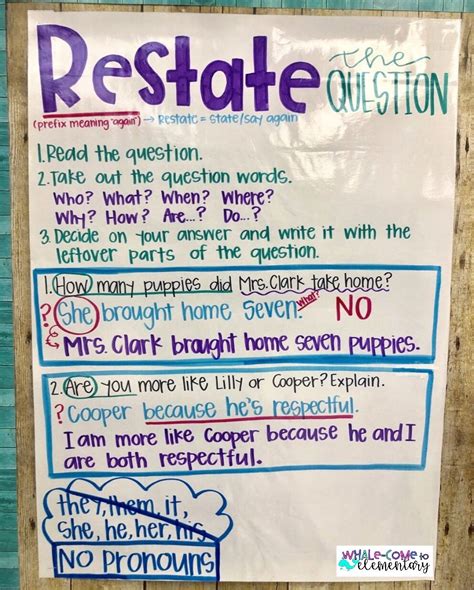Why Restate Questions?
When communicating, it’s crucial to ensure that your questions are clear and understood by the recipient. Restating questions allows you to:

- Verify understanding: Confirm that you have accurately comprehended the question asked.
- Clarify ambiguous questions: Remove any vagueness or uncertainty from the original question.
- Control the conversation: Guide the discussion in a specific direction by restating the question in a way that focuses on the desired topic.
- Emphasize important points: Repeat the question with emphasis on specific words or phrases to highlight key aspects.
- Engage the audience: Show that you are actively listening and encourage further participation.
Techniques for Restating Questions
Here are some effective techniques for restating questions:
- Use different words: Rephrase the question using alternate phrasing without changing the meaning.
- Break down complex questions: Divide long or convoluted questions into smaller, more manageable parts.
- Explain the purpose of the question: Provide context or background information to help the recipient understand the intent behind the question.
- Ask open-ended questions: Encourage detailed responses by restating the question in a way that allows for a variety of answers.
- Use clarifying questions: Ask specific questions to gather additional information or clarify an aspect of the original question.
Examples of Restating Questions
Original Question: “Can you provide me with an overview of the marketing campaign?”
Restated Question: “I would like to get a comprehensive understanding of the key components, timelines, and expected outcomes of the marketing campaign.”
Original Question: “What is your preferred method of communication?”
Restated Question: “To ensure effective communication, could you please share your preferred channels of contact, including email, phone, or instant messaging?”
Benefits of Restating Questions
- Improved communication: Ensures clarity and understanding in conversations.
- Enhanced listening skills: Demonstrates active listening and attention to detail.
- Increased engagement: Involves the audience and encourages participation.
- Reduced misunderstandings: Prevents misinterpretations and ensures that all parties are on the same page.
- Stronger relationships: Fosters trust and rapport by showing that you value the other person’s input.
Common Mistakes to Avoid When Restating Questions
- Changing the meaning: Restate questions without altering their original intent or context.
- Using jargon or technical terms: Avoid using specialized language that may not be understood by the recipient.
- Adding unnecessary information: Keep restatements concise and focused on the key points of the question.
- Asking leading questions: Avoid influencing the recipient’s response or suggesting a specific answer.
- Interrupting the speaker: Allow the person asking the question to finish speaking before restating it.
Effective Strategies for Restating Questions
- Active listening: Pay full attention to the question and identify the key points.
- Use verbal cues: Indicate that you are restating the question by using phrases like, “Let me just clarify…” or “To make sure I understand…”
- Summarize the question: Provide a brief overview of the main points of the question to confirm understanding.
- Paraphrase the question: Rephrase the question using different words to enhance clarity.
- Ask for clarification: If needed, ask specific questions to gather additional information or resolve any ambiguities.
Conclusion
Restating questions is an essential communication skill that enhances understanding, clarifies intentions, and fosters stronger relationships. By employing the techniques and strategies outlined in this article, you can effectively restate questions to achieve clarity, engage your audience, and ensure productive conversations.
